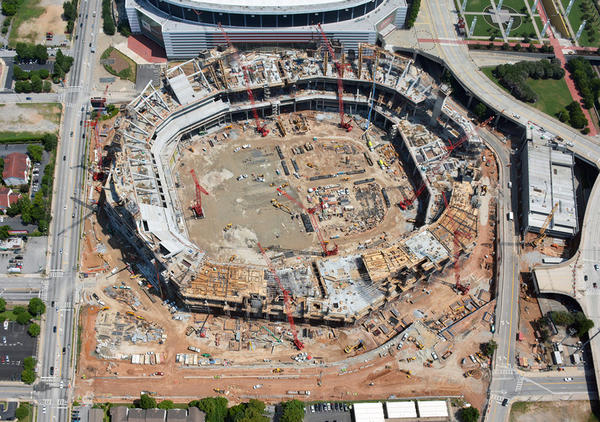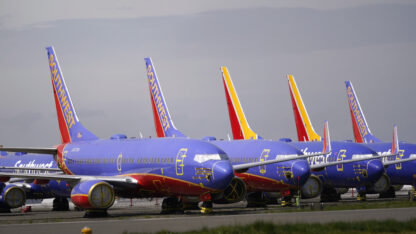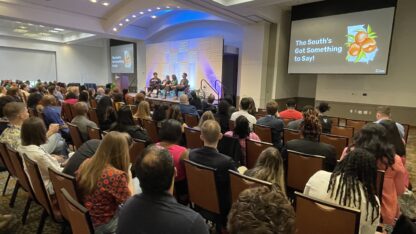Atlanta’s New Stadiums Going Green With Sustainable Plans

The Atlanta Falcons’ new stadium may be the greenest in the country once it’s finished. The team says it’s planning to pursue Leadership in Energy and Environmental Design’s platinum certification, the highest level of sustainable building certification.
The Falcons will join dozens of other professional and college teams with LEED-certified stadiums. Professional leagues are getting into sustainability too. The NBA, NHL, NFL and Major League Baseball all have green programs.
There are a few reasons teams typically go the environmentally-friendly route, said Tim Kellison, who teaches sports management at the University of Florida. He calls it a triple bottom line: the actual environmental impact, attracting new people to the stadium and the social impact.
“[Teams are] trying to inspire change among fans,” he said. “And trying to be better human beings for the environment.”
Plus, he said, teams should be able to save money over time by using energy and water more efficiently.
It’s not just about going big with LEED certification. Kellison said some teams do smaller things too – like selling locally-grown food and using compostable cups.
The teams aren’t doing this quietly. Promoting their environmental efforts is part of the point, said J.C. Bradbury, a sports management professor at Kennesaw State University.
“Teams really want to have a positive public image. They get a lot of public subsidies,” he said. “They want to say, ‘We’re doing the most efficient things possible.’”
The Falcons have a section of their website dedicated to the sustainable side of their new stadium. Philips Arena, home of the Hawks, achieved LEED certification in 2009 and has a similar page. The Braves’ SunTrust Park website doesn’t touch on any environmental efforts, though the team has mentioned them.
“I think that’s a little bit unusual,” said Kellison. “Looking at the trends of new constructions across the major sports leagues, pretty much every stadium is creating this promise that they’re going to pursue LEED certification.”
The Braves’ move raises other environmental questions, since often the most efficient thing is sticking with what you’ve got.
“Certainly one of the largest sources of environmental impact comes from construction and sourcing of construction materials and all those things,” said Kellison. “And once the facility is opened it becomes traffic.”
But, as Bradbury points out, we’re beyond that point with SunTrust Park.
“The moving costs and construction costs and tearing down trees and changing landscape is (sic) not going to be gathered back,” said Bradbury. “The issue is that if we’re going to build a stadium, and we’re starting from scratch, how can we do it to be the most efficient?”
Most stadiums aren’t LEED-certified, even if they are taking on more environmentally-friendly practices. But Bradbury says just about all teams are looking at sustainability, and it’s not just because they’re a bunch of tree-huggers.
“At the end of the day,” he said. “If it was not profitable, I don’t think these teams would be doing this.”
9(MDAxODM0MDY4MDEyMTY4NDA3MzI3YjkzMw004))





